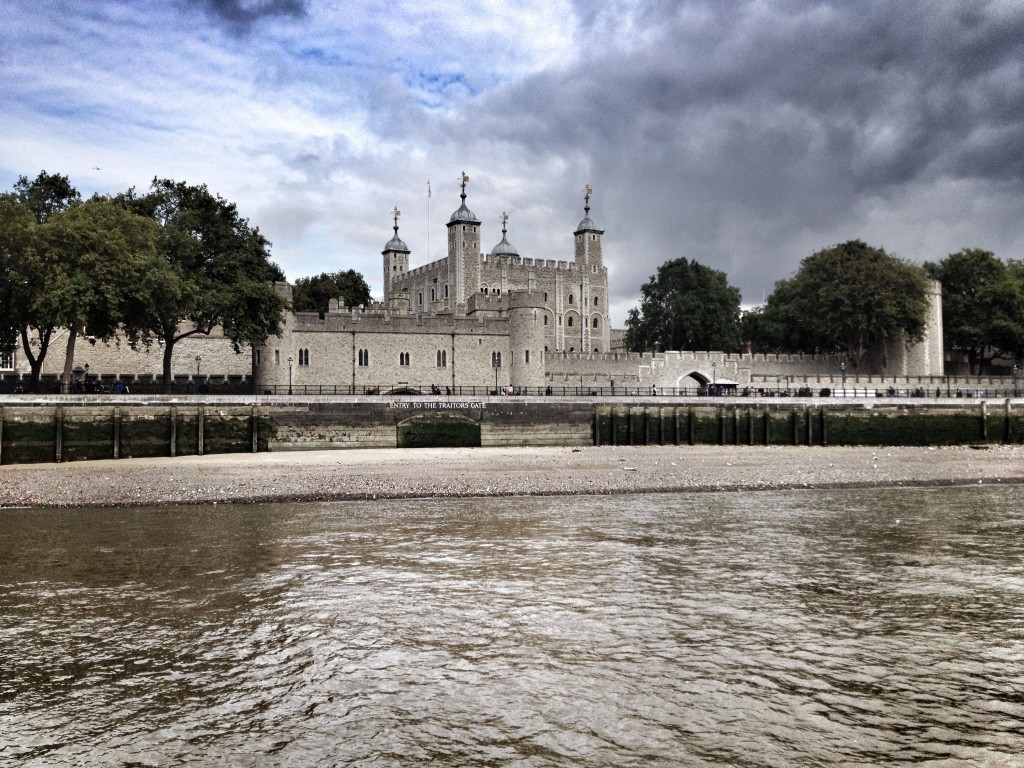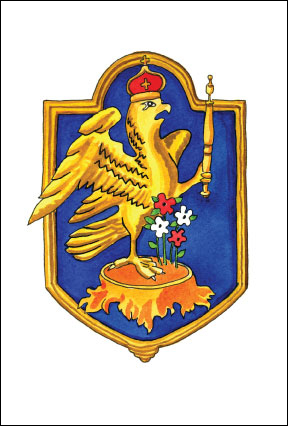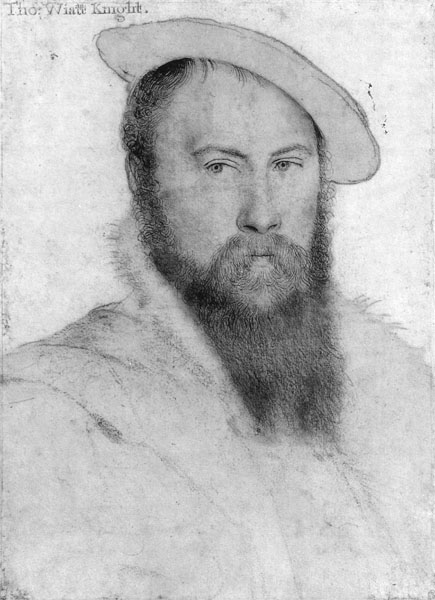A warm welcome to Danielle!
The Falcon Crest in the Tower of London
By Danielle Alesi
 Tower of London is the Mecca for Anne Boleyn enthusiasts. As the location of her death and final resting place, there is hardly a better way to step back in time and into the life of the enigmatic and doomed queen than to walk the cobblestones of this haunting British landmark. Tours of the Tower are led by yeomen guards, better known as “Beefeaters,” who lead large groups of tourists through the more popular aspects of the site, telling intriguing or amusing anecdotes. Each tour is different, highlighting the particular interests of the individual Beefeater. Some focus on ghost stories, others on military history, but regardless of the subtle differences, the tour will always touch on Anne Boleyn at some point or another. From her coronation, to her imprisonment, to her execution, and eventually, to the very building in which she is buried, Anne is a key figure in every visitor’s Tower experience. There is, however, a piece of the puzzle that remains to be solved: the mysterious carving of a falcon badge in the Beauchamp Tower.
Tower of London is the Mecca for Anne Boleyn enthusiasts. As the location of her death and final resting place, there is hardly a better way to step back in time and into the life of the enigmatic and doomed queen than to walk the cobblestones of this haunting British landmark. Tours of the Tower are led by yeomen guards, better known as “Beefeaters,” who lead large groups of tourists through the more popular aspects of the site, telling intriguing or amusing anecdotes. Each tour is different, highlighting the particular interests of the individual Beefeater. Some focus on ghost stories, others on military history, but regardless of the subtle differences, the tour will always touch on Anne Boleyn at some point or another. From her coronation, to her imprisonment, to her execution, and eventually, to the very building in which she is buried, Anne is a key figure in every visitor’s Tower experience. There is, however, a piece of the puzzle that remains to be solved: the mysterious carving of a falcon badge in the Beauchamp Tower.
I first came across the carving when reading Eric Ives’ “The Life and Death of Anne Boleyn” and then shortly after in Alison Weir’s “The Lady In The Tower.” Both works mention the carving and its likely connection to Anne, but neither includes more than a picture and a paragraph and I have not found it used since. I was resigned to find the carving for myself and see what could be gained from it. This proved harder than I had anticipated, as the carving is not labeled or officially recognized by the site. The Beauchamp Tower is home to hundreds of historical graffiti, carvings of prisoners desperate to leave their last mark on the world before they must meet their fate. Each carving is accompanied by a number, which corresponds to a chart and a plaque, giving a brief synopsis on the carving. This particular carving is located on the bottom right of carving number 31 on the west wall of the main chamber on the first floor of the Beauchamp Tower. There is no description for the falcon crest; it is swept along with an entirely different carving, thus often overlooked by those looking to trace the history of Anne Boleyn.
 The carving is of a falcon perched on a sort of stump within a crest. The sketch is crude and rushed, as if the artist did not have much time to work on it. This would fit with the theory that the carver in question was one of the men accused of adultery and treason alongside Anne, as their imprisonment was relatively short. The striking difference between the carved crest and the original is the absence of the crown, scepter, and Tudor roses. The falcon crest in the Tower is close enough in appearance to the original crest and in the right location to make the logical conclusion that it was carved in her honor. However, it is left unidentified and thus included in the description for another set of carvings made by Thomas Miagh in 1581.
The carving is of a falcon perched on a sort of stump within a crest. The sketch is crude and rushed, as if the artist did not have much time to work on it. This would fit with the theory that the carver in question was one of the men accused of adultery and treason alongside Anne, as their imprisonment was relatively short. The striking difference between the carved crest and the original is the absence of the crown, scepter, and Tudor roses. The falcon crest in the Tower is close enough in appearance to the original crest and in the right location to make the logical conclusion that it was carved in her honor. However, it is left unidentified and thus included in the description for another set of carvings made by Thomas Miagh in 1581.
Thomas Miagh was an Irishman imprisoned in the Tower from 1580 to 1581 under charges of being in contact with Irish rebels. There are records of him being tortured during his time there, which is likely why his carving says, “Thomas Miagh, which lieth here alone that fane would from hence be gone. By torture straynge my truth was tried yet of my liberty denied.” His carving also includes the date and his name, dating his imprisonment 45 years after Anne’s time in the Tower. The carving itself is deeply etched into the wall with clear, straight lines, overall a fairly symmetrical piece of work. This is a clear distinction from the roughly etched falcon crest, promoting the conclusion that the artist was probably not the same.
If the carving’s artist was not Miagh, then who could it have been? Some arguments have been made in favor of Thomas Wyatt, the poet most frequently linked with Anne Boleyn. This is unlikely. Although Wyatt was imprisoned under the charge of adultery with the queen, he was released far too quickly for the carving to have been his work. Additionally, his feelings on the matter were immortalized in his preferred form of expression: poetry. Wyatt’s poem ‘Innocentia Veritas Viat Fides Circumdederunt me inimici mei’ does just that. Another proposed artist was George Boleyn, Viscount of Rochford and Anne’s brother. This is far more likely. Rochford’s high rank of nobility would have caused him to be imprisoned in better apartments than the others, such as the Beauchamp Tower. Rochford’s close relationship to his sister and his ardent belief in the religious reforms his family promoted provides further evidence that his last mark would be a sentiment to her coat of arms, a political symbol in itself. It is, of course, possible that one of the other convicted men—Henry Norris, Francis Weston, William Brereton, or Mark Smeaton—could have carved the crest, but George Boleyn is arguably the most probable candidate.
What does this mean in the broader context of Anne Boleyn’s story? Much historical debate has been had about the true reason behind Anne’s downfall. Was it a marriage that took a drastic turn from a lack of success in the birthing chamber? Was it a political coup between powerful court factions? Or, the most unlikely, a true case of justice being served to treasonous adulterers? If it is true that the crest was carved by one of the men accused and condemned to die along with Anne, then it raises the question of what did they think they were dying for? It is unlikely that a man who was falsely accused of adultery and treason would use their remaining time on earth to pay tribute to the woman that brought about their end. If the man were truly guilty of having a sexual affair with the queen, would they have not carved a more personal sentiment than a coat of arms, something that was adopted as a result of her marriage to the king? If he were not guilty would he have paid tribute at all? Or would he have carved something different, his name, crest, wife’s name, a date, a poem, or a defense? The most likely conclusion is that the man who carved the crest believed he was dying for a reason, but not the reason maintained by the prosecution. It can be argued that the artist believed that he was dying for a cause, a more political reason than the fickle whims of a king. In such a contentious time of religious upheaval, social change, and anxiety over royal succession, the deaths of Anne and her accomplices coinciding with the destruction of the most politically influential court faction cannot be merely a coincidence. What if the artist was not using the crest to pay tribute to Anne the woman, but to Anne the head of a political faction and religious movement, a sign of support and solidarity to a cause? Suddenly, a crude and quickly done sketch in a corner on a wall becomes much more historically significant.
Material culture—using physical artifacts to paint a more complete picture of history—is growing as a method of research for historians. It raises the question of how 16th century graffiti, particularly this mysterious carving, can help fill in the gaps in the story of the Tudor dynasty. Certainly the falcon crest should be better represented at the Tower to allow it to be examined and researched more thoroughly. The every day struggle of the historian is to find doorways into the lives of the people we study, searching for any avenue that will shed light on their thoughts, beliefs, motives, and actions. The falcon crest is another piece of the vast puzzle we are trying to assemble when we ask the timeless question: what is the real reason behind Anne Boleyn’s downfall and execution?


















Fascinating. It couldn’t have been done by Wyatt, as he was imprisoned on the upper floor of the Bell Tower, like John Fisher the year before. I’m liking the Rochford explanation.
Thanks for another interesting post :>)
I am intrigued by the incised lines on the upper left of the shield. These appear to be a deliberate inclusion on the shield (unlike the vertical line in the lower left corner which appears to be a random, accidental mark, and completely unrelated to the falcon crest).
It is of course possible that the lines at the top of the shield were carved onto the wall before the shield, and might relate to what appears to be a diamond shape to the left. However, it would be strange if the carver of the shield ignored a pre-existing carving and chose to position his own design exactly there, and not a little further away.
Because the marks appear to be positioned within the shape of the shield, and the depth, cleanliness and angle of the lines compare to those of the shield it would be worth considering whether this represents a heraldic device; a chevron with a circular shape at the base. An avenue for further research, in my opinion.
Hmmm, well a quick check out of heraldic crests drew a blank. Two of the men (Rochford and Norris) had chevrons but pointing upwards, and with 3 bulls / birds respectively, so this seems too tenuous a link. Nevertheless, I still think this mark at the top of the shield is worth checking out more closely… could it be an upturned A?
I know it looks like shooting into the dark, but some amazing things can be unearthed by just looking, questioning and then checking out wild hunches on Google and seeing what comes up. Does any one else have any thoughts on this inclusion?
If I was George and fiercely loyal to my sister, I would have definitely included the crown showing a strong belief in her current position and right. But then, perhaps he knew what was coming and it is symbolic, a fallen crown for example.
I agree, The Tower should devote some deserved attention to this relic. Thank you Danielle.
A memorial, possibly, for all those that were about to be wiped off the face of the earth that were loyal to this Queen and what she stood for.
For political reasons no doubt, camouflaged and hidden with ‘domestic’ reasons. Any one who wanted rid of the powerful Boleyns needed to do this before Anne did produce a son and heir, if this had happened, to undo them would have been virtually impossible, and winds of change would have been unstoppable. There were many frighten people who felt threatened in that court, all vying for power and prestige, all ready to sacrifice anyone and anything to keep their position.
Even the best of novelists couldn’t have written a better story of political intrigue as of this time